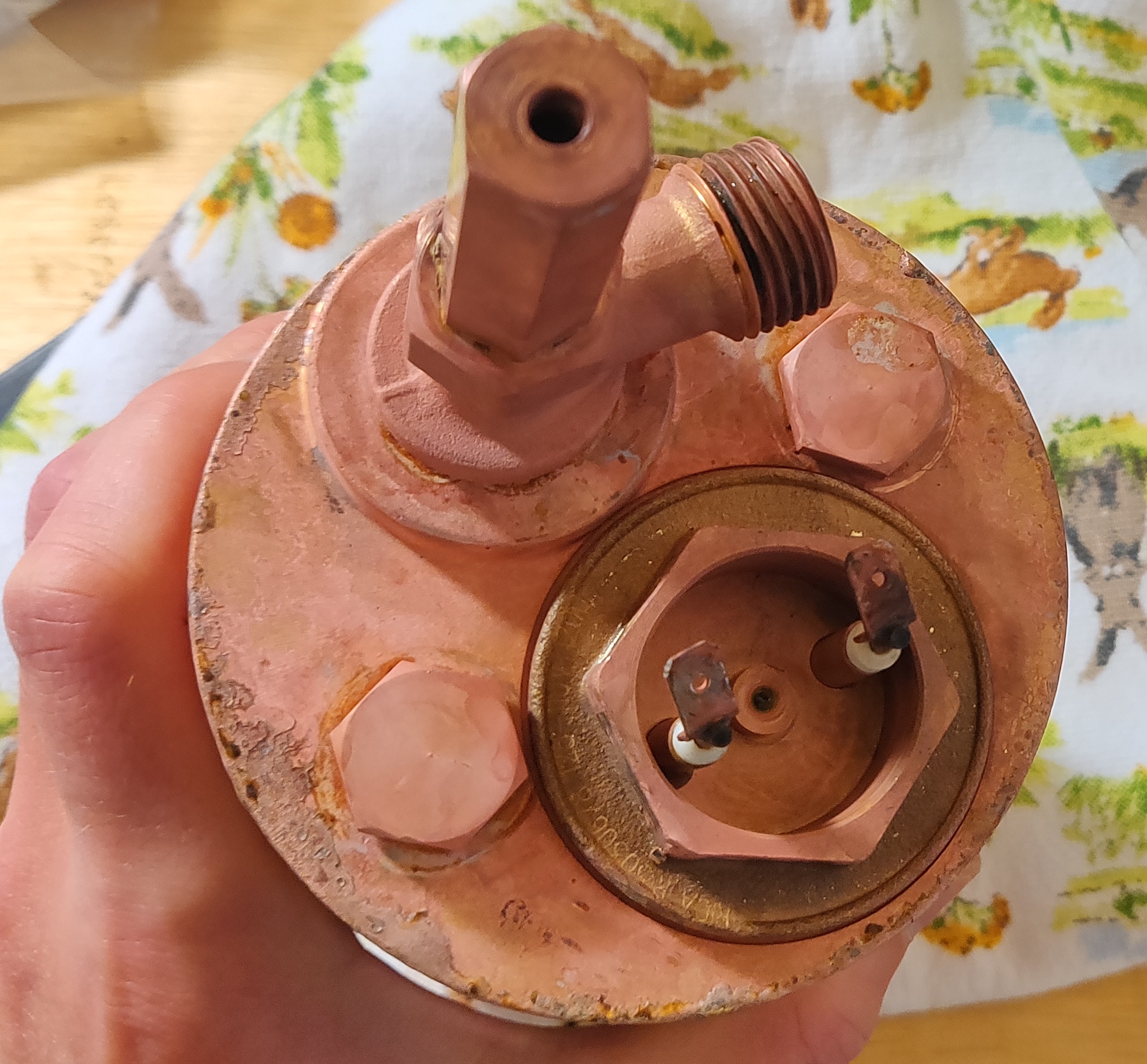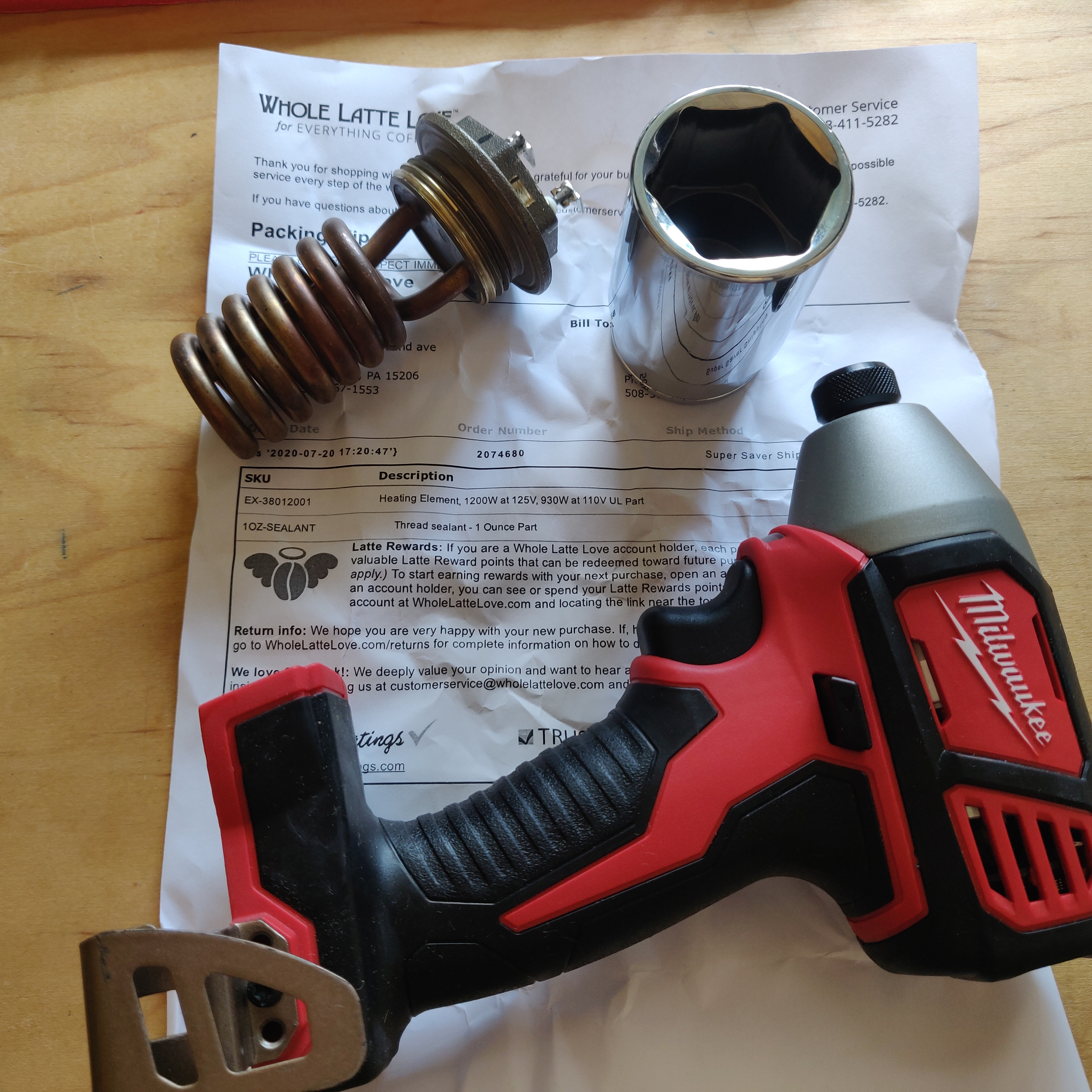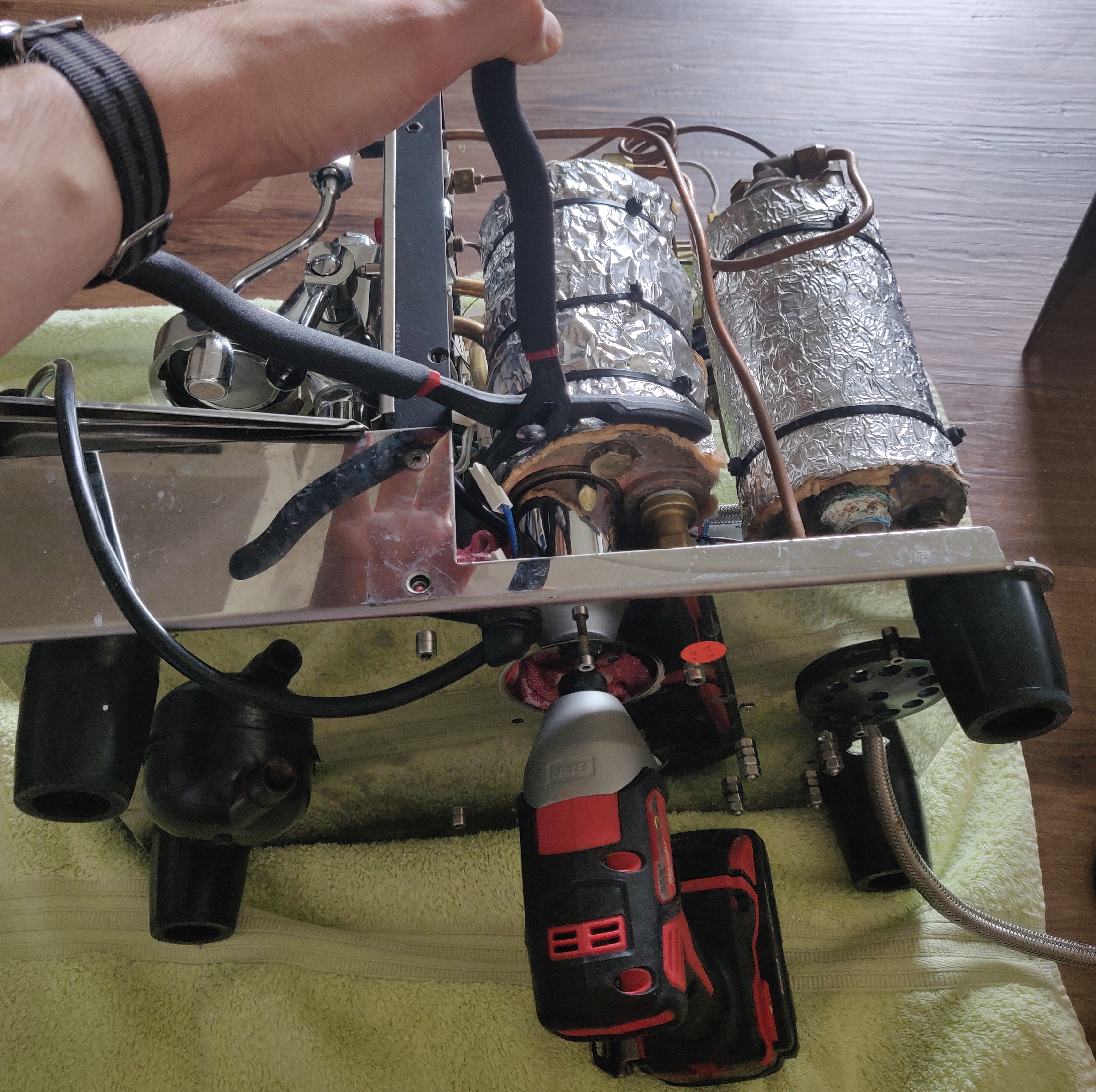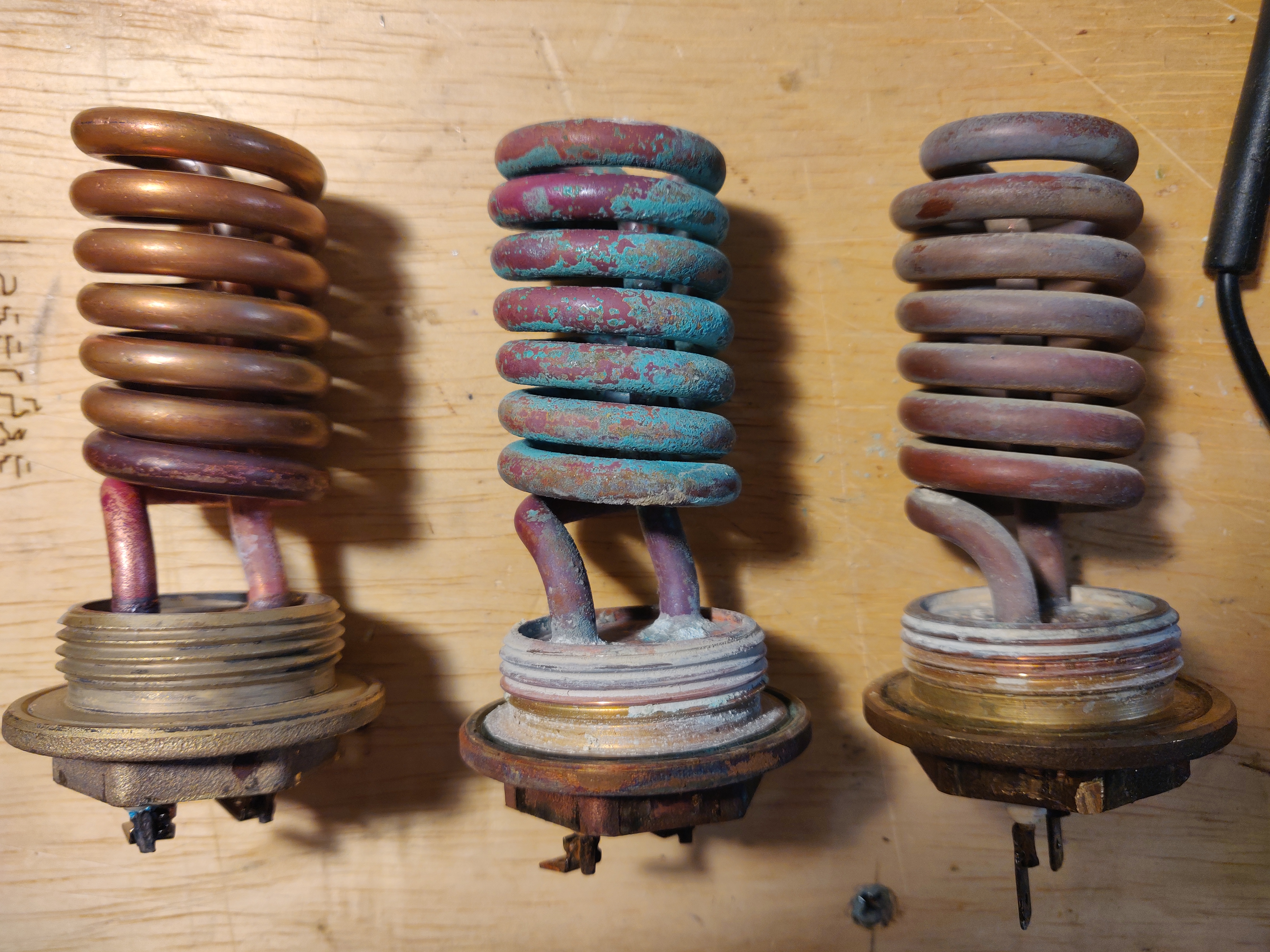Espresso Adventures: Repairing Expobar Brewtus IV - Part Two
Introduction
In the previous post I introduced the Expobar Brewtus IV - a behemoth espresso machine that was in my workplace office. In the fall of 2018, I found it inoperative and with some careful disassembly got it to brew again without issues.
The machine worked for another semester and a half, failing sometime in the summer of 2019. As I was away during this summer, I found out that the machine had broken down when I returned the following Fall.
Symptoms
The symptoms of this latest problem were simple: when the machine was turned on, it instantly tripped the circuit breaker. It was clear that there was a short circuit somewhere in the machine.
I began by testing for short circuits with a multimeter. Basically, no electrical connection in the machine should have a direct short leading to the chassis ground. Therefore if the multimeter detects zero resistance from any electrical connection to the casing, copper piping, or brew tanks, then the root cause is nearby.
An aside: As opposed to debugging more complex electronics such as computer power supplies, debugging an espresso machine is straightforward. Components are not as small and electrical components tend to be fairly simple relays, thermistors, and resistive heating coils. There are no diodes or mosfets in the internal circuitry, save for the PID controller. The PID controller for the brew tank involves some closed-source circuitry but is self-contained and in my experience less likely to fail than other components in the espresso machine.
In testing for shorts, I discovered that the heating element for the brew water tank was shorted to the tank itself. Since the entire tank is meant to be grounded, as soon as mains voltage flowed to the heating element connectors, it shorted to ground and shut down the machine.
In the end, I was looking at replacing the element whose hex-socket
bottom you see in this photo:

This is a much larger hex socket than I’ve seen working on my car, so I bought a
hex head and a cute little refurbed impact driver for the job.
The replacement heating element came from WholeLatteLove.com.

A word from the future: that impact driver is too small!
The Fix: Removing the Borked Element
This is a simple equipment failure, but is difficult to do without the right tools. The replacement heating element is stocked by Whole Latte Love, the company that partnered with Expobar to design the Brewtus IV. This element costs ~$80, but the most difficult aspect if this repair is removal of the old heating element. I purchased the 1/4” impact driver and a 1 and 7/16” socket as specified in the service instructions provided by WLL. I even bought a fancy oil filter wrench (in the photo below) and later a breaker bar. Try as I did, the shorted heating element was stuck fast in the brew boiler.

In retrospect, the best option is to take the boiler out of the espresso machine and bring it to an automotive repair shop. This is what I ended up doing, and in mere seconds of applying their full-sized impact wrench the heating element was removed from the boiler. While the documents provided by WLL suggest an oil filter wrench to hold the boiler as you drive the heating element out, this is not necessary if you have a professional-grade (read: powerful) impact driver. You can hold the boiler in hand as the impact driver doesn’t use sustained, but instead brief and intense peak torque to loosen and remove the element.
Later, the element in the steam boiler shorted and I had to visit the same auto shop to remove that one as well. The build-up of mineral scale on the two old elements (middle and right) is obvious in the photo below, but it’s not obvious why they shorted.

The Fix: Re-Sealing the Boilers
It is clear that Expobar designed the heating elements on the Brewtus IV to use some sort of thread sealant, with no gasket. Searching on online forums makes it clear that most prosumer espresso machines are now designed with gaskets and possibly also sealant, rather than only sealant. Further searching reveals some controversy over what thread sealants to use, given that not all are safe for contact with water at the >100 c operating temperatures of a boiler. Some forum posters suggest using Teflon tape (PTFE) instead of sealant, while others favor sealant because it can be easier to remove for future repairs.
In my case, I used Loctite 567 to seal the boiler heating element. It is rated as food safe up to…just below the target temperature of the boilers. Not ideal, but it’s really hard to find something better.
I ended up using this sealant and carefully applying it to leave the innermost threads bare, to avoid getting too much in the boiler. After letting the sealant ‘cure’ for days outside of the espresso machine, I flushed a lot of water through the brew and steam systems.
It still took some time for me to have confidence that the water in the machine was uncontaminated. In particular, steam from the steam boiler tended to have an odd smell for some time until it subsided.
The upshot of using this sealant is that it’s advertised to remain workable after application. So, next time an element goes bad, I can more easily remove it with my tiny impact driver instead of going to an auto shop.
Conclusions
This was a pretty involved repair that required me to buy some new tools, most of which were insufficient for the job. I read nearly the entire Loctite catalog to find a ‘safe’ sealant and quite a few online forum threads of other espresso enthusiasts before settling on a sealant that seemed acceptable.
For all this effort, the machine is running pretty smoothly now. There is a slight leak at the brew heating element, so I will eventually need to remove and re-seal that one. When that time comes I’ll try teflon tape, as I think it will be safer for the water and my health.
In a future post, I’ll detail a design flaw in the brew temperature regulation of the Brewtus IV and how I resolved it. Not to fear, the machine is still running and brewing delicious espressos.